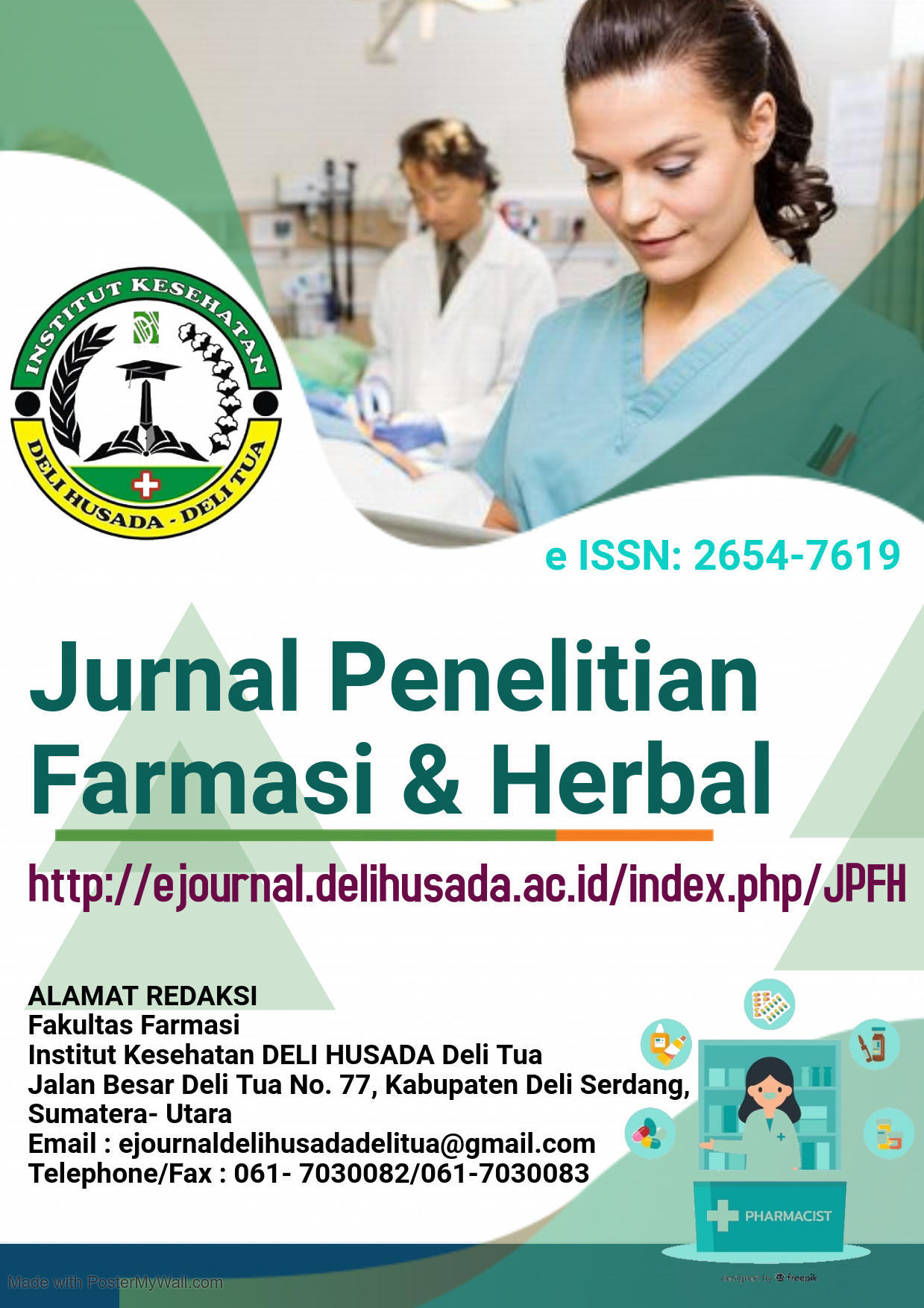A FORMULATION OF HAND BODY LOTIO FORMULATION OF HAND BODY LOTION EXTRACT ethanol from lily leaves (Crinum asiaticum L.) AS A SKIN MOISTURIZER
FORMULATION OF HAND BODY LOTION EXTRACT ethanol from lily leaves (Crinum asiaticum L.) AS A SKIN MOISTURIZER
Abstract
Lily leaves (Crinum asiaticum L.) have bioactivity as antioxidants and contain chemical compounds such as glycosides, flavonoids, saponins, tannins and triterpenoids. This study aims to formulate daffodil leaf extract into a hand body lotion dosage form and observe the effectiveness on volunteer skin for 4 weeks. This research was conducted experimentally. Samples were taken from daffodil leaves (Crinum asiaticum L.), then extracted by maceration with 96% ethanol and concentrated using a rotary evaporator. The ethanol extract of daffodil leaves was formulated with concentrations of 5%, 8% and 11%. The preparation evaluation test includes homogeneity, organoleptic, pH, emulsion type, irritation test, and effectiveness test of the preparation to moisturize the skin. The results showed that the ethanol extract of daffodil leaves could be used to make homogeneous grated emulsion preparations which were stable during 4 weeks of storage, pH 7.52-7.25, oil-in-water emulsion type and did not disappear. Any hand cream product that contains narcissus leaf ethanol can increase skin moisture. The composition of the most effective hand and body cream in the treatment of dry skin is a preparation with a concentration of 11% ethanol extract of lily leaves, which increases skin healing by 40.35% and is applied to the skin within 1 month.
Downloads
References
Cindy Priscilia dkk. (2022). PEMERIKSAAN FITOKIMIA DAN AKTIVITAS EKSTRAK ETANOL DAFFACH (Crinum asiaticum L) PADA TIKUS PUTIH (Mus musculus). Jurnal Farmasi, Sains dan Kesehatan Vol. 1.
Manajer Umum Badan POM. (1985). Formula kosmetik Indonesia. Jakarta:
Kementerian Kesehatan Republik Indonesia. halaman 29, 32-36.
Hamzah et al. (2014). PENGARUH PENGEMULSI TERHADAP ALTERNATIF ANTIOKSIDAN.
Kusantati, H., Prihatin, PT., Wiana, W. (2018). Tata Rias Kulit Volume 1. Jakarta: Departemen Pengembangan Profesi Pendidikan Tinggi. halaman 59-105.
Poljsak, B. dan Dahmane, R. (2022). Radikal bebas dan penuaan kulit ekstrinsik. dalam Penelitian dan Praktek Dermatologi, 20 (12).Silalahi, M. (2021). The ethnomedicine of the medicinal plants in sub-ethnic Batak, North.
SNI 16-4399-1996. (1996). Sediaan Tabir Surya. Dewan Standarisasi Nasional.Jakarta.
Tranggono, R. d. (2016). Buku Pegangan Kosmetologi. Jakarta: Perpustakaan Utama Gramedia. halaman 11-32, 167.
Sumardika IW, & Jawi IM. (2011). ekstrak air daun.
Wasitaatmadja, S.M. (2018). Panduan untuk kosmetik medis. Jakarta: Pers Universitas Indonesia. Halaman 3-5, 58, 196-197







